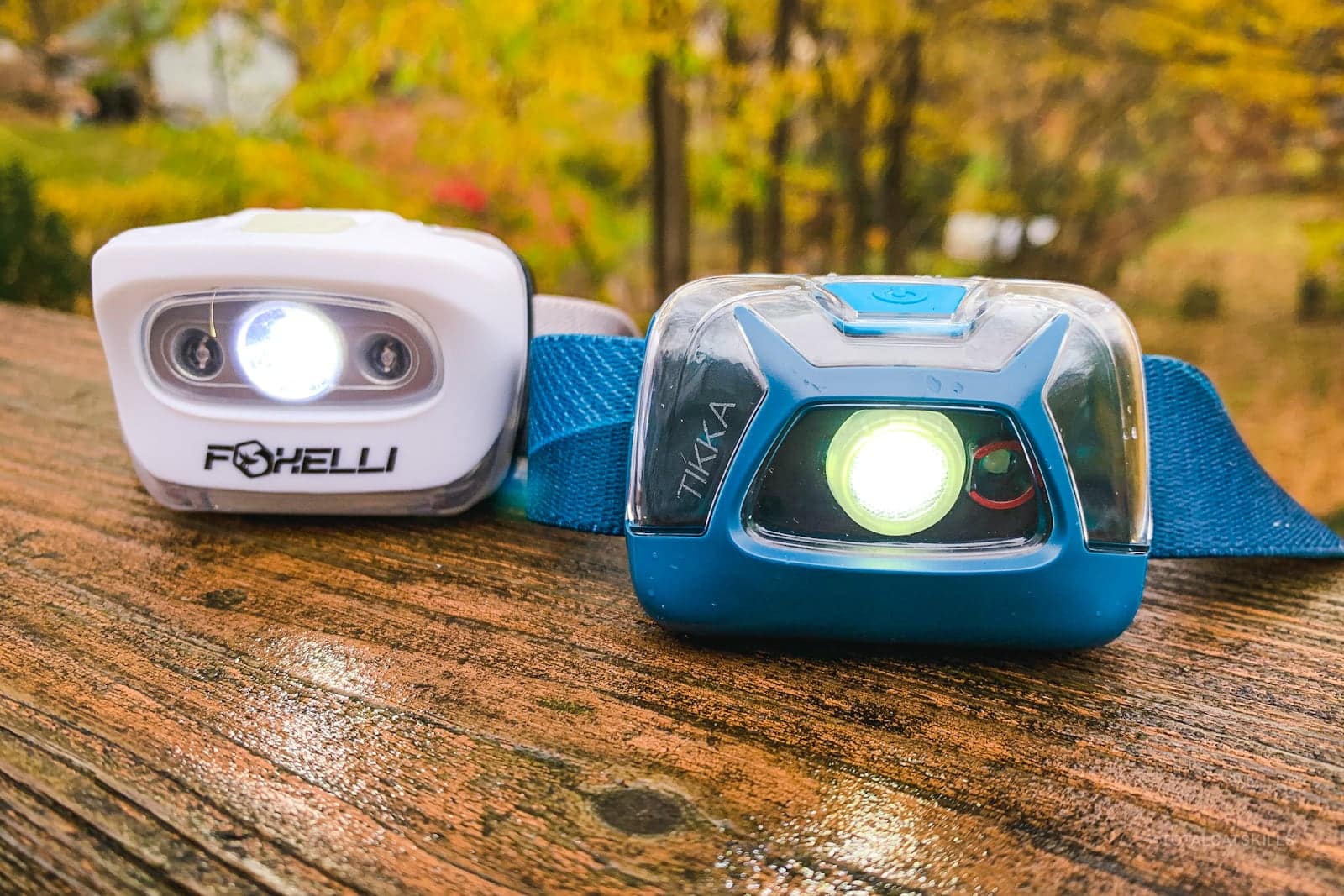Disclosure: This content may contain affiliate links. Read my disclosure policy.
A great hiking headlamp doesn’t cost a lot — and you can’t beat the convenience
For hikers and campers, headlamps are essential pieces of gear. Whether you’re hiking out at dusk after a long day, or hiking in at night to a glorious summit sunrise, a headlamp will keep you on track and safe.
If you don’t already own one, fall is the perfect time to buy a headlamp. Every year, the end of daylight savings seems to catch many casual hikers off guard. Suddenly, sunset is at 4:30pm — which, in fairness, is crazy. November is the best month to find terrified hikers stumbling around the woods, hoping to find their way back to a trail with the world’s worst lamp: their iPhone.
There are four safety concerns with using your phone’s flashlight on a hiking trail…
- Your phone’s flashlight sucks: it’s just not bright enough to illuminate the terrain under your feet, or to pick out crucial trail blazes in the dark;
- It drains your phone’s battery quickly: and, realistically, just when you need it, your battery is probably already at 15%;
- It ties up a whole hand: on rugged trails, especially at dusk and in the dark, you need to keep your hands free for balance and safety, or to use your trekking poles to help keep you upright;
- It makes you anxious: if the first three points don’t make you feel concerned, imagine how anxious you’re going to feel about dropping your expensive baby and smashing its screen.
When I was just getting started, and before I knew better, the worst-case scenario almost happened to me. One evening, coming down from Sugarloaf in the Catskills at dusk, I very nearly got lost in the thick woods — 30 feet from the Roaring Kill trailhead!
Of course, dying is bad. But dying 30 feet from my car? Imagine the embarrassment.
I bought my first headlamp immediately after that experience.
Headlamp Possibilites
But it’s not just that headlamps reduce safety concerns. They also give you options. Headlamps are your portal to night hikes and sunrise hikes. They also help make camping out so much better; from setting up camp to moving around at night, they add so much ease.
Many headlamps also have a strobe mode that can act, in an emergency, as a flashing beacon.
Even if you’re not outdoorsy, a headlamp is a wonderful tool. Everyone should own one. They’re great around the house for doing repairs that put you in tight spots, or any time you’re outside and want some light but need to keep both hands free.
How to Choose a Hiking Headlamp
Hikers do not need to buy the most expensive models. At the upper end, headlamps are designed with rock climbers and cavers in mind. For hikers, even a cheap headlamp is infinitely better than a phone flashlight.
The white headlamp above on the left is a Foxelli MX20 (165 lumens, 50m beam) that costs $10.
The aquamarine headlamp on the right is a Petzl Tikka (300 lumens, 65m beam) that costs $30.
Both lamps have a single button on top for switching the lamps on and off, and for switching between their lighting modes.
The Petzl store on Amazon has a ton of cheaper and fancier models to explore.
Headlamp Specs
There are several specs to consider when researching which headlamps to buy. Here are the most important things to focus on…
- Bulb Type — Almost all headlamps today use LED bulbs which are extremely bright and energy efficient. Both my headlamps, shown above, are LED-based and are at least a year old — and I haven’t had to replace their batteries yet.
- Power Supply — Both headlamps use standard alkaline AAA batteries, which are fine in the warmer months. The Tikka, however, can also use rechargeable lithium or Ni-MH batteries which perform much better in the frigid winter months. (Although I haven’t experienced it personally, alkaline batteries are known to bonk suddenly in the cold.)
- Lumens — With a maximum of 165 lumens, the inexpensive MX20 has been absolutely fine for most night hikes. FWIW, I tend to use my headlamps on their lowest setting which is plenty bright unless the clouds roll in — and it helps the batteries last much longer.
- Light Modes — Both headlamps shown have five settings: low, medium and full power, as well as a strobe function and a red light setting. (The red light is useful in-camp for preserving night vision.)
- Water Resistance — Both models are IPX rated for at least moderate rain. I’ve had no issues with either.
- Tilt Feature — Both models sit against the forehead but have the ability to tilt the lamp housing forward to direct the beam either away from, or more toward, your feet. This is a must-have feature.
- Weight — Lamp marketing seems to fetishize weight but my head and neck can’t tell the difference between the MX20’s 91g and the Tikka’s 82g.
Modern hiking headlamps are now so cheap, you can probably afford to keep two in your backpack: a good one for regular use, and a cheap one for back-up. You’ll never know when you’ll need to loan one to a friend who forgot theirs — or to a stranger stranded in the dark.
Of course, a headlamp is also one of the ten essentials you should pack on every hike.
Helpful Links
- REI’s guide on how to choose headlamps is solid
- Backcountry also has a good primer on how to choose a headlamp
- Outside has a list of budget headlamps
- Here’s Switchback Travel’s Best Headlamps of 2020
- And CleverHiker has a useful 10 Best Headlamps of 2020 listicle

